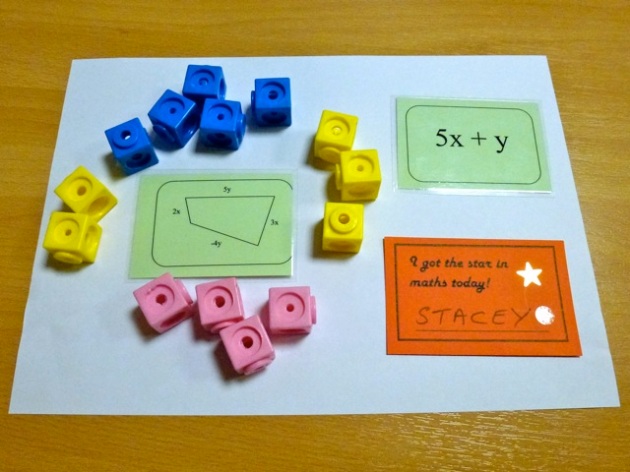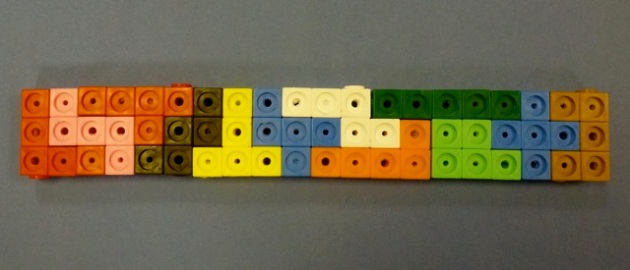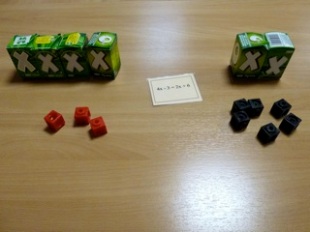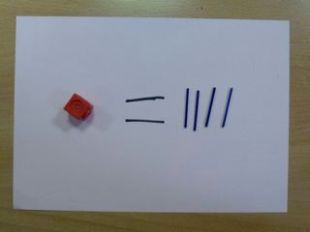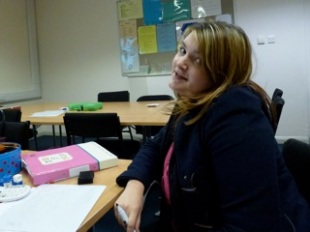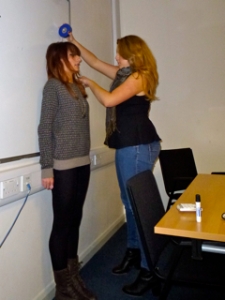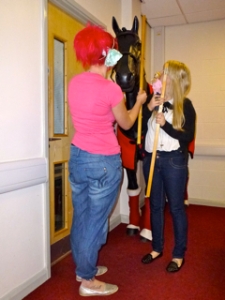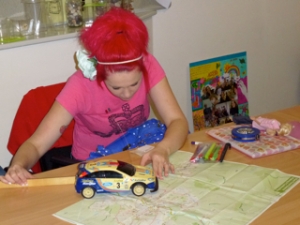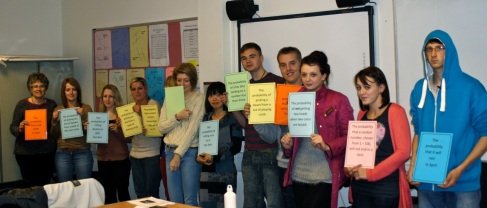Rich Questions
Many years ago, in the early days of Inset and ‘Baker Days’, when people still knew who Baker was, a colleague gave a demonstration of a simple resource, an apple, and how it could be used to enhance his teaching of modern languages. I’ve never forgotten it, as the epitome of a crass and thoughtless teacher showing off his knowledge without a care for our bored minds and beleaguered bums. He spoke without pause, and we probably forgot every word he said. I’m entirely in favour of simplicity, and love a simple question to start things off, and watch the threads take off in a variety of directions; in fact, the simpler the better. My group on Friday afternoon are returning learners of assorted ages, nationalities, and existing skills. I’m confident all of them have a wide range of mathematical knowledge, and my job is to get them back into critical thinking mode before term starts in September. We’ve covered some algebra and some ‘shape & space’, and lots of incidental number stuff in the first couple of weeks, and this week returned to shape.
Me – ‘Draw something with an area of 18 square centimetres.’
I’d supplied centimetre square paper, rulers and pencils, and the rest was up to them.
After a few moments:
A – ‘I’ve got them all – rectangles 1 x 18, 2 x 9, and 3 x 6 – that’s all there is.’
C- ‘What about 4 x 5? 4 + 5 + 4 + 5 = 18?’
A – ‘No, you are confusing area with perimeter – area is the inside, perimeter is round the outside.’
(A demonstrates to C on C’s drawings the difference between the two concepts.)
Me – ‘Are you sure this is all?’
Another pause…
C – ‘Can we use halves?’
Me – ‘Did I say we couldn’t?’
C – ‘In which case we could have 4 x 4.5, 1.5 x 12…’ and goes on to list numerous other cases. By this time, C has moved entirely from the concrete to the abstract, and has ceased to draw rectangles.
Meanwhile, B is thinking…
B – ‘Can we have a square?’ And answering herself: ‘No, because the side would be the square root of 18, and that isn’t a ‘real number’’. She might not have said real, but something like it, indicating it wasn’t something we could measure with a ruler. I actually take part for a moment, stop asking questions and open a calculator on the interactive board to show that root 18 is a damned tricky number, if you want to catch hold of it with a calculator.
Me – ‘You might like to come back to that one.’
B- ‘What about triangles? Can we have an equilateral triangle?’
Me – ‘That might require some serious mathematics, but there are lots of other types of triangles that you might look at.’
C then produces a number of right-angled triangles, and demonstrates to B how she has halved assorted rectangles of 36 square centimetres to produce triangles of 18 square centimetres.
Meanwhile, A is ordering her thoughts around the number of variations on the original question.
Me – ‘Are there an infinite number of shapes with that area?’
A – ‘Yes. I’m thinking of a splodge, and that splodge can be any shape at all that covers 18 squares.’
Me – ‘A splodge – I like that. Sticking with rectangles for a moment, are there an infinite number of rectangles?’
A – ‘Yes there are. If I have an area of 18, and a given length, I can divide to find the width.’ We are now into re-arranging formulas, by intuition.
Me – ‘What did we refer to when we were looking at patterns last week, and general terms?’
C – ‘A variable.’
So now I’m inclined to open a spreadsheet on the screen, and A demonstrates confidence and fluency with Excel. I put in some headings, and she explains the formula for the ‘Area’ column.
A – ‘It is the contents of the cell A2 multiplied by the contents of the cell B2.’ Spoken like a pro, and delivered with more clarity than a good many IT teachers could muster. We pause whilst A explains the concept of spreadsheets to B and C. She then does all the clever bits, like copying down formula, and creating a new sheet for doing it backwards, with area fixed and length as the variable. After which A and I get into a technical discussion where she initially sees ‘infinity’ as going on forever, and I’m hoping for her to see the infinite number of cases bounded by the ones she has. In other words, she can see rectangles stretching forever and getting thinner, and I’m seeing an infinite set of widths, say, between 4cm and 5cm. But time is pressing.
Back to D, who by now has moved from right-angled triangles to isosceles and scalene triangles, all the while rediscovering her knowledge and naming those shapes.
M- ‘What about the square – is there any way to construct it, without having to measure root 18, and thinking of what you have done to find the triangles?’
D – after a very short reflection: ‘Yes, if you draw a square of 36, then cut off the corners to create… What’s it called?’
A – ‘A rhombus?’
D – ‘Yes, a rhombus, a square that’s half of the square, another square inside it, tilted…’
Me – ‘Come up and draw it!’
She does, and we have to break off shortly, with the briefest recap of what has ensued, what has been revisited, learnt, expanded upon. It’s show time, and C and B have a suitable array of rectangles and rectilinear shapes to share.
And an hour was far too short. What could we have done with two, and what might we do next term when they start for real:
Do all the shapes have the same perimeter, and if not, which has the least? Is there a maximum?
Will we find that parallelograms are easy to compute, and are trapeziums just as easy?
Are there any simple regular shapes that have an area of 18 sq cm, apart from a square (which wasn’t that simple at all), or do they all behave like equilateral triangles and need skills we might not learn in a few months?
Will we get to circles, and rearrange that formula that Maggie Thatcher said every pupil should know, to find a circle of 18 sq cm, and has it the smallest perimeter? (Cherry pie delicious, apple pies are too.)
And can we generate the formulas for the ones we’ve found, producing simple elegant statements with symbols and operators?
And could we use those formulas to generate variations, as we rearrange them according to known variables?
I’m not entirely pleased with myself, although I’m pleased that everyone has shown learning, and that both A and D have demonstrated true mathematical thinking and insight. B was not confident that he’d contributed, but the others reassured him that he’d be supported in future. I think I was indulging, and could have possibly tried to keep things simple at this early stage. And next term I will. But there again, challenging is good. And I had fun, and remember, that’s the important bit, I’m the teacher!
